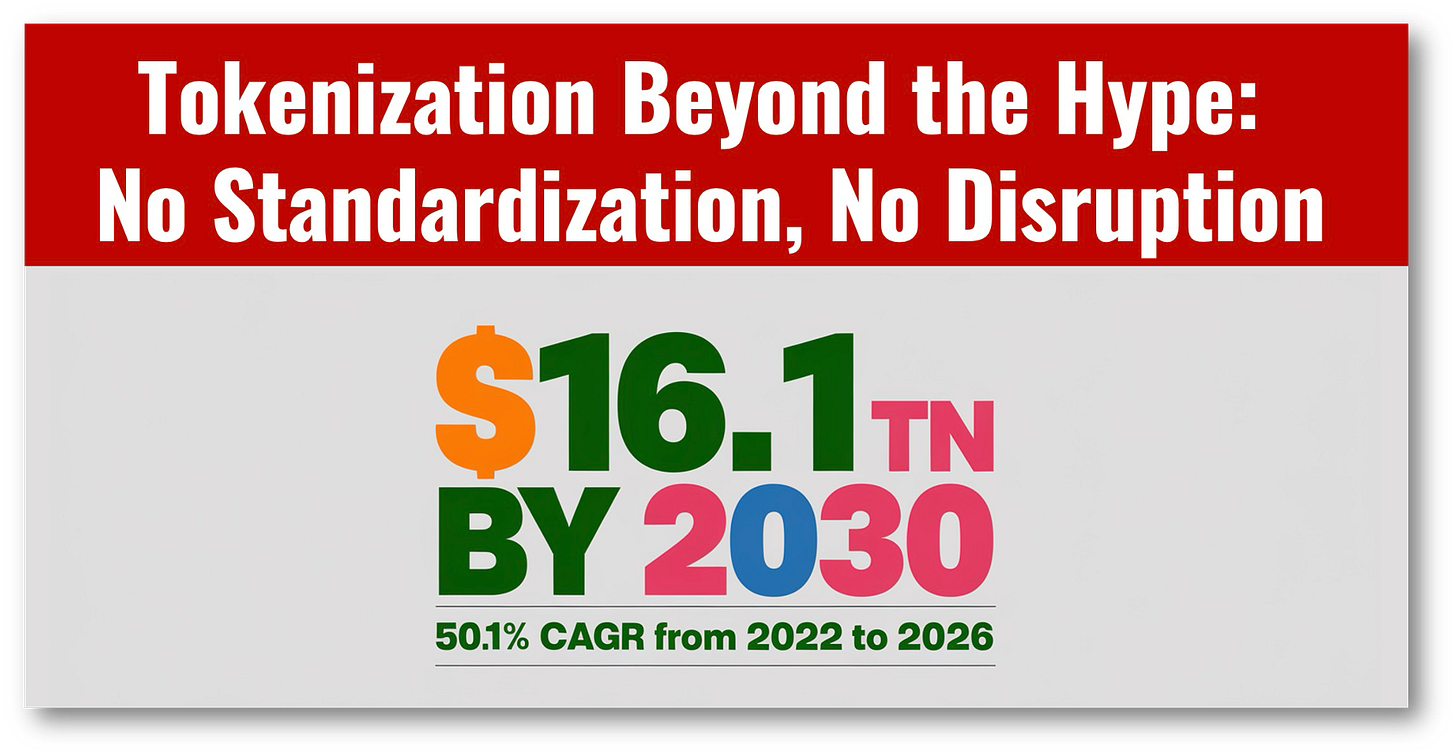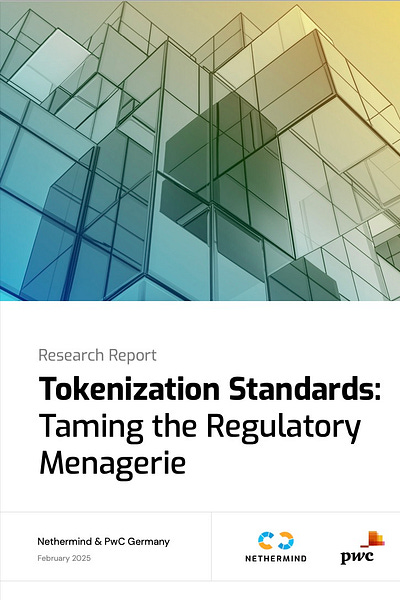Tokenization Beyond the Hype: No Standardization, No Disruption
Without standardization, tokenization isn't going anywhere
This is my daily post. I write daily but send my newsletter to your email only on Sundays. Go HERE to see my past newsletters.
HAND CURATED FOR YOU
PwC and Nethermind go beyond the tokenization hype to tackle standardization and address the fundamental problem that tokenization isn’t going anywhere unless my tokens are the same as yours.
I love tokenization and write about how it is poised to change financial markets. PwC expects the market to reach $16.1 trillion by 2030 with a 50.1% CAGR from 2022 to 2026. That’s great but estimates in the tens of trillions are now a dime a dozen.
So far, ERC-20, -1400, and -3643, tokenization adopted from Ethereum smart contracts, are the default standards. So there is hope.
These contracts aren’t bad, but even within these standards, the treatment of how an asset is represented in the contract may differ. For example, some tokenizations of US treasury bills use 18 decimals, others 6.
Our best hope for resolution lies with consortia built around banks and exchanges that can promote standards. Still, even these efforts will fall short unless they are adopted into regulations to guarantee fungibility.
This is yet another area that will need regulatory clarity sooner rather than later if tokenization is to disrupt finance with trillion dollar markets.
👉Tokenization Needs Standards
🔹 Regulation is the Biggest Challenge & Opportunity for Tokenization
➣ MiCAR (Markets in Crypto-Assets Regulation) provides a comprehensive framework forcrypto assets in the EU, but it does not apply to financial instruments.
➣ MiFID II (Markets in Financial Instruments Directive) governs tokenized financial instruments, creating a complex compliance landscape.
➣ Regulatory clarity is increasing, but jurisdictional differences remain an obstacle for global adoption.
🔹 Token Standards Play a Crucial Role in Compliance & Adoption
➣ ERC-20 remains the dominant fungible token standard but lacks built-in compliance features.
➣ ERC-1400 and ERC-3643 are tailored for security tokens, embedding compliance mechanisms such as KYC, AML, and transfer restrictions.
➣ CMTAT (Swiss-compliant standard) is optimized for Swiss financial regulations but may require adaptation for other jurisdictions.
🔹 Compliance-Aware Token Standards are Gaining Adoption
➣ ERC-3643 (T-REX) integrates identity management and regulatory controls directly into token operations, ensuring on-chain compliance.
➣ ERC-1400 enables document management and investor protections, making it suitable for tokenized securities and regulated assets.
➣ Hybrid approaches will likely dominate, combining off-chain compliance processes with on-chain automation.
🔹 The Road Ahead: Standardization & Cross-Chain Interoperability
➣ Industry-wide collaboration is needed to establish universal tokenization standards aligned with regulatory frameworks like MiCAR.
➣ Cross-chain interoperability remains a challenge, as token standards must adapt to different blockchain environments.
➣ The adoption of zero-knowledge proofs (ZKPs) and privacy--enhancing technologies will be key for institutional adoption of tokenized financial assets.






